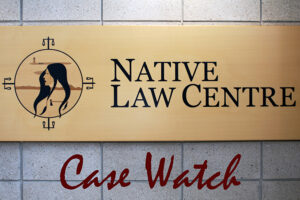Appeal dismissed. Tribunal decisions stand that the complaints were a direct attack on legislation. Legislation not a service under the Canadian Human Rights Act.
This appeal concerns several complaints alleging that Indian and Northern Affairs Canada (“INAC”) engaged in a discriminatory practice in the provision of services contrary to Section 5 of the Canadian Human Rights Act (“CHRA”). This section prohibits, among other things, the making of discriminatory distinctions in the provision of services customarily available to the general public. The Indian Act, since its enactment in 1876, has governed the recognition of an individual’s status as an “Indian”. The Indian Act has a registration system under which individuals qualify for this status on the basis of an exhaustive list of eligibility criteria. It is incontrovertible that status confers both tangible and intangible benefits. INAC denied a form of registration under the Indian Act that the complainants would have been entitled to if past discriminatory policies, now repealed, had not been enacted.
In two separate decisions, Matson v Canada (Indian and Northern Affairs), 2013 CHRT 13 and Andrews v Canada (Indian and Northern Affairs), 2013 CHRT 21 (“Andrews”), the Canadian Human Rights Tribunal (“Tribunal”) determined that the complaints were a direct attack on the Indian Act. On the basis that legislation is not a service under the CHRA, it dismissed the complaints. On judicial review, both the Federal Court ([2015] 3 CNLR 1) and the Federal Court of Appeal ([2016] 4 CNLR 1), found that the Tribunal decisions were reasonable and should be upheld. Two issues were before this Court: (1) whether deference is owed to a human rights tribunal interpreting its home statute and (2) whether the Tribunal’s decisions dismissing the complaints as direct attacks on legislation were reasonable.
On the first issue, where an administrative body interprets its home statute, there is a well-established presumption that the reasonableness standard applies. In applying the standard of review analysis, there is no principled difference between a human rights tribunal and any other decision maker interpreting its home statute. Where an administrative body interprets its home statute, the reasonableness standard applies Dunsmuir v New Brunswick, 2008 SCC 9 (“Dunsmuir”). In both of its decisions, the Tribunal was called upon to characterize the complaints before it and ascertain whether a discriminatory practice had been made out under the CHRA. This falls squarely within the presumption of deference. The Tribunal clearly had the authority to hear a complaint about a discriminatory practice, and the question of what falls within the meaning of “services” is no more exceptional than questions previously found by the Court not to be true questions of jurisdiction.
A contextual analysis would not rebut the presumption in this case. Where the presumption of reasonableness applies, the contextual approach should be applied sparingly in order to avoid uncertainty and endless litigation concerning the standard of review analysis. The presumption of reasonableness was intended to prevent litigants from undertaking a full standard of review analysis in every case. This Court may eventually find it necessary to revisit the standard of review framework. However, dissatisfaction with the current state of the law is no reason to ignore the precedents following Dunsmuir. Where a contextual analysis may be justified to rebut the presumption, it need not be a long and detailed one. Changes to “foundational legal tests” are not clear indicators of legislative intent, and do not warrant the application of the contextual approach or, by extension, correctness review. Nor does the absence of a privative clause, the fact that other administrative tribunals may consider the CHRA, the potential for conflicting lines of authority, or the nature of the question at issue and the purpose of the Tribunal.
On the second issue, the adjudicators reasonably concluded that the complaints before them were properly characterized as direct attacks on legislation, and that legislation in general did not fall within the meaning of “services”. Although human rights tribunals have taken various approaches to making a distinction between administrative services and legislation, this is a question of mixed fact and law squarely within their expertise, and they are best situated to develop an approach to making such distinctions.
The adjudicator in Andrews noted that the sui generis nature of Parliament’s power to legislate is inconsistent with the characterization of law-making as a public service and that law-making does not have the transitive connotation necessary to identify a service customarily offered to the public. Parliament is not a service provider and was not providing a service when it enacted the registration provisions of the Indian Act. Law-making is unlike any of the other terms listed in s 5 as it does not resemble a good, facility or accommodation. It is sui generis in its nature. This is confirmed by the powers, privileges and immunities that Parliament and the Legislatures possess to ensure their proper functioning, which are rooted in the Constitution. The dignity, integrity and efficient functioning of the Legislature is preserved through parliamentary privilege which, once established, is afforded constitutional status and is immune from review. The disposition of this appeal, however, says nothing as to whether the Indian Act infringes the rights of the complainants under s 15 of the Charter. In this regard, there have been two successful challenges to the Indian Act registration provisions, both of which have prompted legislative reform (Descheneaux v Canada (Attorney General) [2016] 2 CNLR 175 (QCCS); McIvor v Canada (Indian and Northern Affairs, Registrar), [2009] 2 CNLR 236 (BCCA).
Furthermore, Parliament can be distinguished from the administrative decision makers that operate under legislative authority. These individuals and statutory bodies, which include the Registrar, may be “service providers”, or entities that provide services customarily available to the general public. If they use their statutory discretion in a manner that effectively denies access to a service or makes an adverse differentiation on the basis of a prohibited ground, s 5 will be engaged. But, when their job is simply to apply legislated criteria, the challenge is not to the provision of services, but to the legislation itself (Public Service Alliance of Canada v Canada Revenue Agency, 2012 FCA 7). The complaints did not impugn the means by which the Registrar had processed their applications, but substantively targeted the eligibility criteria that the Registrar was required to apply. Both Tribunal decisions stand on their own merits.



